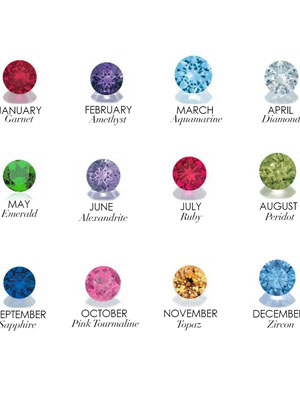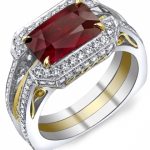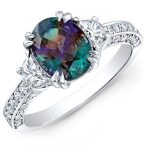
What is the birthstone for your month?
BIRTHSTONE COLORS
The birthstones we associate with certain months now are not necessarily the same ones as in ancient times. Birthstone colors were once the most important feature of a stone. Ancients did not distinguish between a ruby and a garnet, for example.
The names used in history may not relate to the stone we think of with that name today.
For example, a sapphire in the Bible was probably what we know today as lapis.
Diamonds were probably a white sapphire or white topaz.
The stones originally assigned to each month related to the stones appearing on the breastplate of a Jewish high priest.
The wearing of birthstones is thought to bring good luck and good health. Astrologers long ago attributed supernatural powers to certain gemstones.
BIRTHSTONES BY MONTH
The January birthstone, garnet, is thought to keep the wearer safe during travel.
Garnet, January birthstone
The February birthstone, amethyst, is said to strengthen relationships and give its wearer courage. At one time, only royalty could wear the gem. Ancient Greeks thought that the amethyst guarded against intoxication. In fact, amethyst comes from amethystos, a Greek word meaning “sober.”
Amethyst, February birthstone
The March birthstone, aquamarine, was thought to cure heart, liver, and stomach diseases—all one had to do was drink the water in which the gem had been soaking. Early sailors believed that aquamarine talismans, etched with the likeness of the sea god Neptune, protected them against ocean dangers.
Aaquamarine, March birthstone
The April birthstone, diamond, in addition to being a symbol of everlasting love, was once thought to bring courage. In Sanskrit, the diamond is called “vajra,” which also means lightning; in Hindu mythology, vajra was the weapon of Indra, the king of gods.
Diamond, April birthstone
The May birthstone, emerald, was one of Cleopatra’s favorite gems. It has long been associated with fertility, rebirth, and love. Ancient Romans went so far as to dedicate this stone to Venus, the goddess of love and beauty. Today, it is thought that emeralds signify wisdom, growth, and patience.
Emerald, May birthstone
The June birthstone, pearl, has long been a symbol of purity. The ancient Greeks believed that pearls were the hardened tears of joy from Aphrodite, the goddess of love.
Pearl, June birthstone
The July birthstone, ruby, was regarded by ancient Hindus as the “king of gems.” It was believed to protect its wearer from evil. Today, the ruby’s deep-red color signifies love and passion.
Ruby, July birthstone
The August birthstone, peridot, symbolizes strength. It is sometimes called the evening emerald for its light green color. It was once believed that the green peridot crystals found in volcanic ashes were the tears of the volcano goddess, Pele. When set in gold, this gem was said to protect the wearer from nightmares.
Peridot, August birthstone
The September birthstone, sapphire, was once thought to guard against evil and poisoning. It was believed that a venomous snake would die if placed in a vessel made of sapphire. Traditionally a favorite stone of priests and kings, the sapphire symbolizes purity and wisdom.
Sapphire, September’s birthstone
The October birthstone, opal, symbolizes faithfulness and confidence. The word comes from the Latin opalus, meaning “precious jewel.” Necklaces with opals set in them were worn to repel evil and to protect eyesight.
Opal, October’s birthstone
The November birthstone, topaz, symbolizes love and affection. It is believed to give the wearer increased strength and intellect.
Topaz, November’s birthstone
The December birthstone, turquoise, is regarded as a love charm. It is also a symbol of good fortune and success, and it is believed to relax the mind and to protect its wearer from harm. Turquoise rings, in particular, are thought to keep away evil spirits.
Turquoise, December’s birthstone




